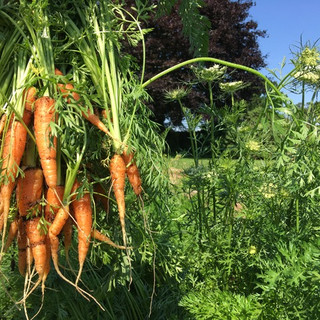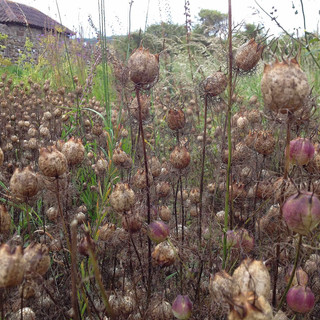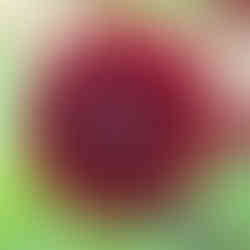August Gardening Tips
- Debi Holland

- Aug 1, 2021
- 4 min read

Well summer has brought many challenges, from drought to deluges. Some days have resembled a heatwave whereas others autumn. Plants have had to cope with changeable conditions, some quickly going to seed but others have thrived.

Dahlias are in full swing, sunflowers have sparkled and sea holly, lavender, santolina and osteospermum have all flowered prolifically.
It has also been a great season for vegetables and fruit. Bountiful apple crops, plants dripping with tomatoes, gluts of courgettes and the soil has been heaving with fresh carrots, parsnips and beetroot! I'm scouring the internet and recipe books for new ideas to make the most of the harvest.
Containers, as always, are the hardest to keep going in arid conditions. If water butts run dry recycle household water. If you are on a water meter like us, then strike a balance between watering the essentials and leaving other plants to fend for themselves.

Water is essential for plants to photosynthesis and for seeds to germinate.
Plants absorb nutrients in solution so without water the whole process breaks down, leaves wilt, drop off and eventually plants die. But plants are resilient so can shut down to preserve their own existence for a period of time but if water is absent for too long eventually they will succumb.
Do not immediately throw out all your crispy leaved botanicals though, in some cases, when conditions improve, many plants recover. By cutting out dead-looking stems you may discover the remaining stems and roots are alive, they have just temporarily shut down their extremities. Water, feed and patience will hopefully pay dividends.
Likewise water absorption activates germination in seed, it literally breathes life into the dry seed and commences the metabolic process to form a seedling. So if sowings have been unsuccessful you may find that seeds later germinate when conditions are optimum.

There are lots of tasks we can be doing this month to help gardens perform to their best.
It is the holiday season. Ensure you have some help to water / feed plants whilst you are away. Ask a friendly neighbour and share watering duties!
Be water wise in these drier months. Collect rainwater (if there is any!) to water the garden and containers. Ideally avoid tap water as it contains chlorine although in this weather anything is better than nothing so you can recycle 'grey water' from your household, in the short term, to get through the drought. For example shower/bath or laundry/washing up water; just be aware that kitchen water may contain fat, chemicals and sodium. Consider plant-friendly washing up products so you do not add harmful chemicals to your soil.
Water consistently so plants do not get stressed and bolt.
Water efficiently; mornings and evenings are favourable when the temperature is cooler and you are less likely to lose water to evaporation. Avoid watering the leaves, this can cause scorching so water at the base. It is the roots that take up the water so ensure they get the best chance of getting a drink.
Continue to dead head flowers regularly to promote new blooms.
The hot weather has meant many blooms are brief and flowers have gone to seed quicker than usual. Gardens will be full of seed heads. Sprinkle in border directly or collect in a labelled paper envelop to sow at a later date. Listen out for the rattle when you shake it to ensure the seed is viable - if no sound, too early to pick.
Remove all unwanted plant seed heads or remove flower heads before they set seed.
Keep on top of weeds and remove before they set seed. This hot weather has not deterred the weeds...in fact they have thrived.
Feed feed feed. Plants are working hard to produce more blooms so give them all the help they need. Garlic oil and seaweed provide an organic nutritious boost and contains many useful trace elements. All tried and tested excellent performers.
Feed flowering plants with high potash fertiliser to prolong flowering period.
Give acid loving plants, (azaleas, rhododendrons, camellias, blueberries) a boost with ericaceous feed.
Plants to prune / trim back AFTER they have finished flowering: Wisteria, rambling roses, Ilex (holly) but ideally allow to flower & seed as valuable food source for birds throughout winter, Laurus (Laurel), Lavendula (lavender), Philadelphus (mock orange), Pyracantha (firethorn) second prune to expose berries, Thymus (thyme), tip prune Callistemon (bottlebrush). Many shrubs need little regular pruning but neglected or old shrubs can be renovated by pruning out one in three old stems.
Plant or sow sweet williams, foxgloves, sweet rocket, wallflowers, honesty.
Look out for earwigs on dahlias. Encourage them away from your flowers by placing a plant pot stuffed with newspaper upside down on a stick, they should opt for this as refuge and save the dahlias!
Perfect time to take pelargonium, sage and rosemary cuttings.
Stake rudbeckias, echinaceas and any other tall perennials. Keep the garden smart by supporting plants.

Cut perennial geraniums such as ‘Johnson's Blue’ down to the ground. This will encourage a second bloom.
Pull (do not cut) alstromerias. This promotes new buds from the base. You should get a second flush.
Keep sowing salad and herbs for a consistent supply.
Transplant strawberry runners to a pot / new garden location.
Look out for potato / tomato blight and blossom rot.
Harvest crops. From fruit to veg to cut and come again; the kitchen garden goes bananas this time of year!
Keep an eye on your apple trees. Early varieties such as ‘Beauty of Bath’ will be ready.
Keep greenhouses well ventilated. Remember to water plants regularly. On hot days dampen down greenhouse to increase humidity and reduce red spider mites.
Keep a look out for vine weevil, lily beetle, sawfly, slugs and aphids.
Stop slugs and snails eating plant foliage. Pick off by hand, shingle/egg shells or water in naturally occurring microscopic organisms called Nematodes; ‘Nemaslug’.
Avoid metaldehyde-based products as they are poisonous to pets and other wildlife.
Gardens are delicately balanced ecosystems so try not to totally eradicate pests as they will be a food source for other creatures i.e. birds/frogs love slugs & snails! Everything co-existing, with no dominant species, will equal a healthy garden.

All photos taken by Debi Holland © 2020




















































































Comments